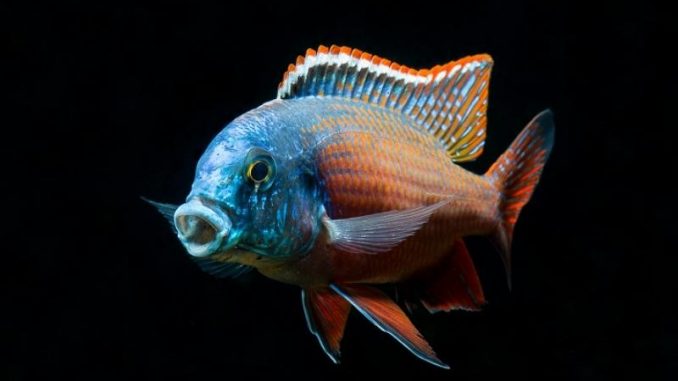
The red empress cichlid is a freshwater fish of the Cichlidae family, endemic to Lake Malawi in Eastern Africa.
The colorful red empress is one of 850 species of cichlids that lives in Lake Malawi, and is closely related to the peacock cichlid.
The red empress cichlid is a popular fish among aquarists because of its bright, rainbow-like colors and semi-aggressive temperament.
Though not considered a community fish, the red empress cichlid can be kept with similar Lake Malawi species and other red empress cichlids.
TABLE OF CONTENTS
Red Empress Cichlid Care Guide & Species Profile
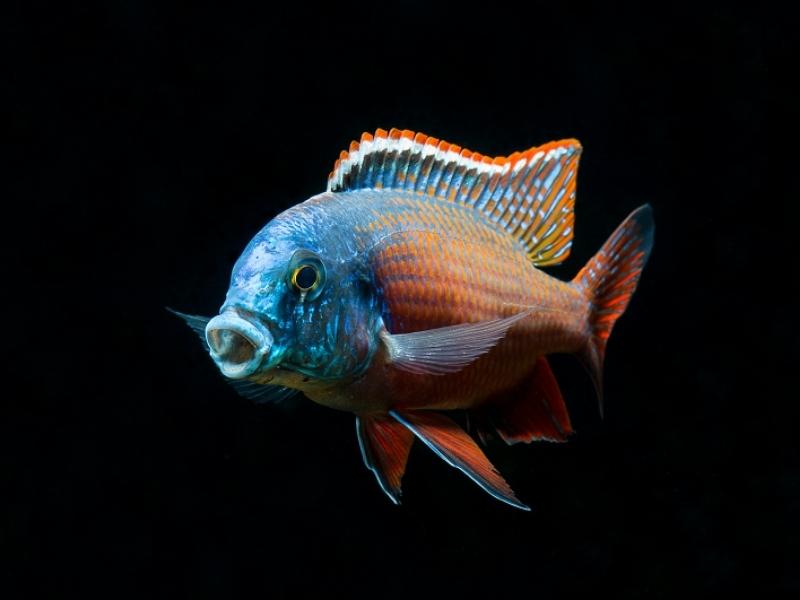
| Scientific name: | Protomelas taeniolatus |
| Common names | Red empress, spindle hap, Haplochromis red empress |
| Distribution: | Eastern Africa |
| Size: | 4.5–6 inches |
| Life expectancy: | 5 years |
| Color: | Number of color variations; females have silver-colored bodies with dark lines and spots, males take on a reddish-orange color |
| Diet: | Omnivore |
| Temperament: | Semi-aggressive |
| Minimum tank size: | 75 gallons |
| Temperature: | 73–82°F (23–28°C) |
| pH: | 7.7–8.6 |
| Hardness: | 5–15 dGH |
| Care level: | Easy |
| Breeding: | Mouthbrooder |
Origin
The red empress cichlid (Protomelas taeniolatus) is a freshwater fish native to Lake Malawi. The relatively shallow waters of Lake Malawi create a sediment-free, rocky habitat for red empress cichlids.
Lake Malawi is fed by several streams that stir the lake’s water, exposing red empress cichlids to continuous water movements.
The International Union for Conservation of Nature and Natural Resources (IUCN) lists the red empress cichlid on the Least Concern list. These fish are widespread and there are no recognized threats.
Adult Size & Lifespan
Red empress cichlids grow to four and a half to six inches long. In their natural habitat, red empress cichlids reach the higher end of the size spectrum. In captivity, these fish stay on the smaller side.
Red empress cichlids reach sexual maturity when they are eight or nine months old. Most fish continue growing after this point until they reach full adult size. The red empress has an average growth rate for freshwater fish.
The average lifespan of red empress cichlids is five years in captivity.
Availability
Red empress cichlids are popular aquarium fish and readily available in most pet stores.
These online stores currently have stock of the red empress cichlid:
A single red empress cichlid costs $10.59–$29.00 on average, while a group of five to nine fish costs $15.29–$19.34.
Appearance & Behavior
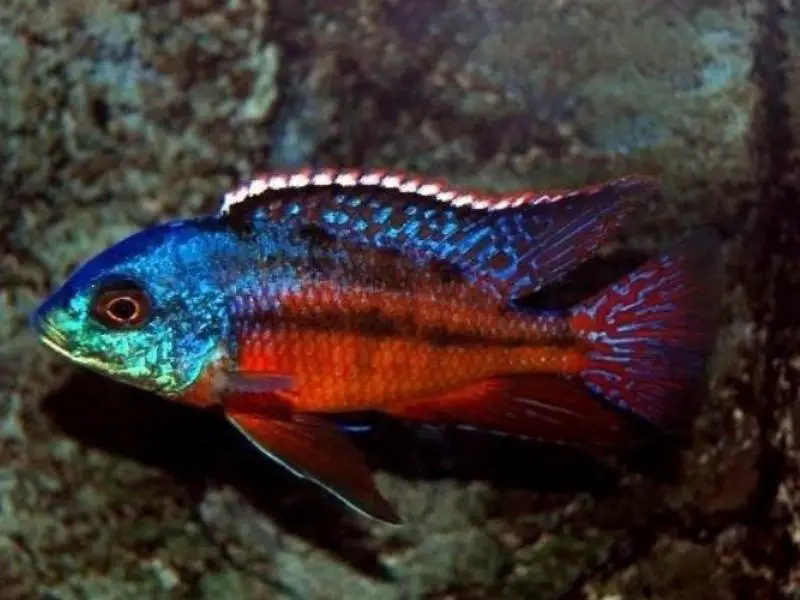
This red empress’s colorful appearance makes this cichlid popular among fishkeeping enthusiasts. Red empresses are also hardy and not as aggressive as other African cichlids.
Colors, Patterns, Fins, and Sex Differences
The red empress cichlid has a similar body to the peacock cichlid but it’s shape is deeper. The red empress cichlid’s forehead is also higher and it has a forked tail.
The anal, dorsal, pectoral, and caudal fins of the red empress cichlid are long. The fin’s angled shape helps the red empress cichlid to swim in the wild.
Each fin has sharp, spiny rays to help fend off predators. Male red empress cichlids have sharp, pointed dorsal and anal fins, and their fins are slightly bigger than the female’s.
Red empress cichlids come in many color variations, depending on where in Lake Malawi they are from. The body of the red empress cichlid comes in shades of gold, blue, orange, or red.
Most males have an orange-red body and blue head, while the female’s silver body is markedly less colorful.
Depending on where they live, some males have a brownish-red anal fin. The red empress’s upper body is adorned with two horizontal lines and faded oval spots decorate the back.
The biggest difference between male and female red empress cichlids is color.
Females have two horizontal lines on their body and irregular ovals on their back. Some female red empress cichlids have a splash of orange on their fins.
Sexing red empress cichlids is challenging because juveniles have the same coloring as females. Males start developing their vibrant colors when they grow over three inches long. Females, however, remain silvery-gray.
There are several naturally occurring color morphs of the red empress cichlid. Blue fire red empress cichlids have completely blue bodies while the edges of the scales are tipped in orange or red.
The Chizumula island red empress has a yellowish/orange body and a blue head.
Typical Behavior
Red empress cichlids are peaceful compared to other cichlid species. Red empress cichlids aren’t considered community fish, but they do well in small groups of one male to three or four females.
Male red empress cichlids aren’t tolerant of other males and will become aggressive.
Red empress cichlids like to stay close to the rocky bottom of the tank since it provides shelter from potential predators.
These fish eat several smaller meals during the day in the mid and lower levels of the aquarium. During the day, red empress cichlids are active, and they sleep at night when the tank is dimly lit.
Red Empress Cichlid Care & Tank Requirements
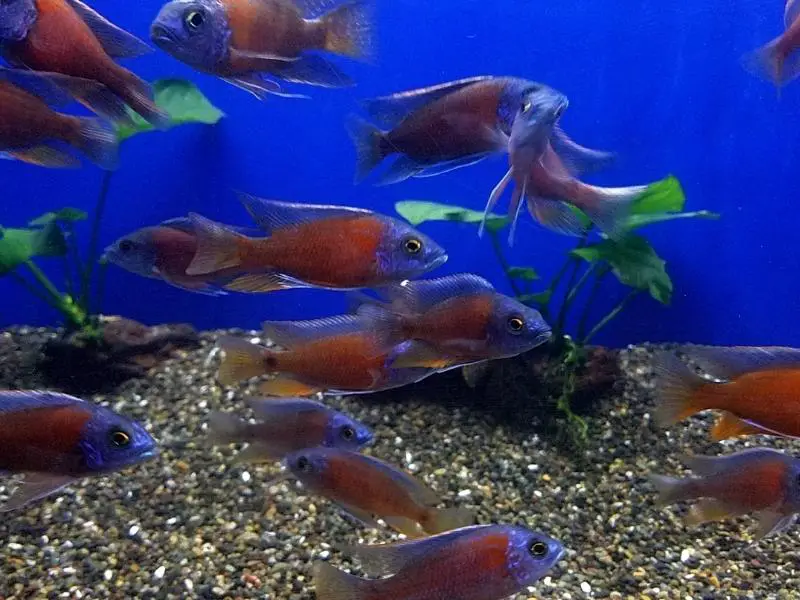
Red empress cichlids are easy to care for. These fish are a great choice for beginner cichlid keepers.
The natural habitat of the red empress cichlid consists of highly mineralized water and strong water movement.
Combined with evaporation, the lake’s water is alkaline with stable pH levels.
Since there’s sand at the bottom of Lake Malawi, a sand substrate is a must for red empress cichlids.
Rock and wood found in Lake Malawi create caves and crevices that serve as hiding places for red empress cichlids.
Keep the red empress’s natural environment in mind when setting up its aquarium.
A large tank with high-quality water, controlled by a strong filtration system, and a sandy and rocky bottom ensures the red empress cichlid feels at home.
Red empress cichlids are omnivores. In the aquarium, these fish eat spirulina-based flakes, and meaty foods such as frozen or freeze-dried krill or mysis shrimp.
Habitat and Tank Requirements
Use a large tank to maintain stable water conditions, and to provide ample space for red empress cichlids to swim.
The red empress tolerates slightly brackish conditions, but can’t survive in a completely brackish-water tank.
The streams that flow into Lake Malawi churn the water, creating a constant water flow. Use a strong, efficient filtration system to create water movement and maintain water quality.
To create sufficient water movement in larger tanks, you may need a second filter pump.
Without good water quality, your red empress cichlid’s colors will fade and become unappealing. Change 10%–20% of the tank’s water weekly, depending on the bioload.
The bottom of Lake Malawi is covered in sand, rocks, and plants. Red empress cichlids are sand sifters so the bottom of their tank must be covered in sand.
Use rock and some wood to create hiding places in the aquarium. These fish like to swim in the middle and lower levels of the tank, so leave plenty of space for swimming.
Vertically placed rocks and rocks arranged horizontally in the tank mimic the red empress cichlid’s natural environment and also serve for spawning.
Plants like Vallisneria, Anubias, and Java fern are good tank additions that the red empress won’t uproot.
Tank Conditions
| Water type: | Hard, freshwater |
| Tank size: | 75-gallon minimum, 100-gallon preferred |
| Water temperature: | 73–82°F (23- 28°C) |
| Substrate: | Sand, rocks |
| Tank setup: | Plants, any type of rock, artificial decor |
| Acidity: | 7.7–8.6 pH level |
| Water hardness: | 5–15 dGH |
| Filter: | Yes, red empress cichlids create a lot of waste and need a strong filtration system |
| Air pump: | Yes, these fish prefer moving waters and a high-quality air pump can mimic these conditions inside the tank |
Red empress cichlids are hardy and easy to care for. Meet the specific tank requirements to ensure your fish are healthy, happy, and thriving.
The minimum tank size for a single red empress cichlid is a 75 gallons, though a 100-gallon tank is preferred. If you plan on having more than one red empress, you’ll need at least a 200-gallon tank.
Red empress cichlids need plenty of room to grow. When kept in a small tank where they are unable to move around as they wish, these fish become stressed.
The aquarium should be filled with hard, freshwater to mimic the red empress’s natural lake environment. The red empress fish does best in temperatures from 73–82°F, but the ideal temperature is 76ºF.
This species of fish is used to living in alkaline waters, so the pH of the water inside your fish’s tank should be in the 7.7–8.6 range.
Add a strong air pump inside the tank to create a lot of water movement. Set up the pump to move the water continuously through the tank, making sure there aren’t any stagnant areas.
A powerful filtration system is necessary too. Red empress cichlids produce a lot of waste. If the filter isn’t strong enough, there is a risk of water chemistry changes that could stress your fish.
The red empress is susceptible to common freshwater fish diseases. Poor water quality, stress, and lack of a nutritious diet put these fish at risk of becoming sick.
Disease
Similar to other fish, red empress cichlids can get a few diseases and infections, including:
- Ich, also known as white spot disease, is a parasitic disease that affects many freshwater species of fish. This highly contagious malady is fatal if not treated in time. Raising water temperature to 86°F for three days or using copper-based medicine are the best ways to treat ich. Regardless of the treatment plan, quarantine infected fish as soon as possible to prevent the spread of the disease
- Malawi bloat is a disease that typically affects the many different species of cichlids that live in Lake Malawi, including the red empress. The rock-dwelling mbuna and colorful peacock cichlids are also highly-susceptible to the disease. Malawi bloat is rarely seen in other freshwater species. The disease causes a visibly swollen stomach, loss of appetite, and other digestive issues.
There’s a link between food, a poor diet, and Malawi bloat.
Fish that eat high carbohydrate diets including flakes and pellets that contain oats, potatoes, soybean, and rice, are more likely to suffer from bloat.
To prevent Malawi bloat, feed your fish with high-quality spirulina-based flakes and protein snacks.
Tank Mates
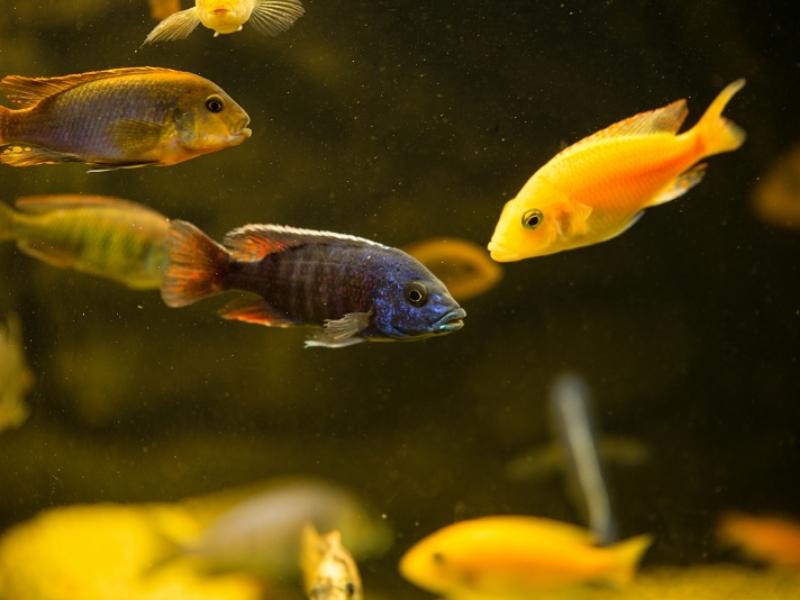
Though relatively peaceful, red empress cichlids aren’t community fish. However, in small groups they do best with similar species and other red empress cichlids.
To prevent aggression, keep groups of one male and three to four females in one tank.
Other peaceful Lake Malawi species make good tank mates for red empress cichlids.
The best tank mates for red empress cichlids are:
- Blood parrot cichlids
- Venustus cichlids
- Livingstonii cichlids
- Pictus catfish
- Ropefish
Non-fish aquarium species, such as snails, shouldn’t be kept with red empress fish as they might get eaten.
Diet and Feeding
As omnivores, wild red empress cichlids feed on small invertebrates, zooplankton, and aufwuchs (small algae that grows on rocks).
In the aquarium, red empress cichlids need quality spirulina-based flakes or pellet food. Meaty foods such as freeze-dried krill can be fed to the fish periodically as protein snacks.
The majority of your red empress cichlid’s diet should be vegetable-based. When fed a high-quality and nutritious diet, these fish maintain vibrant coloring.
Red empress cichlids are prone to overeating. When overfed, these fish lose their naturally slender appearance. Instead of offering one or two large meals, feed several small meals during the day.
Breeding
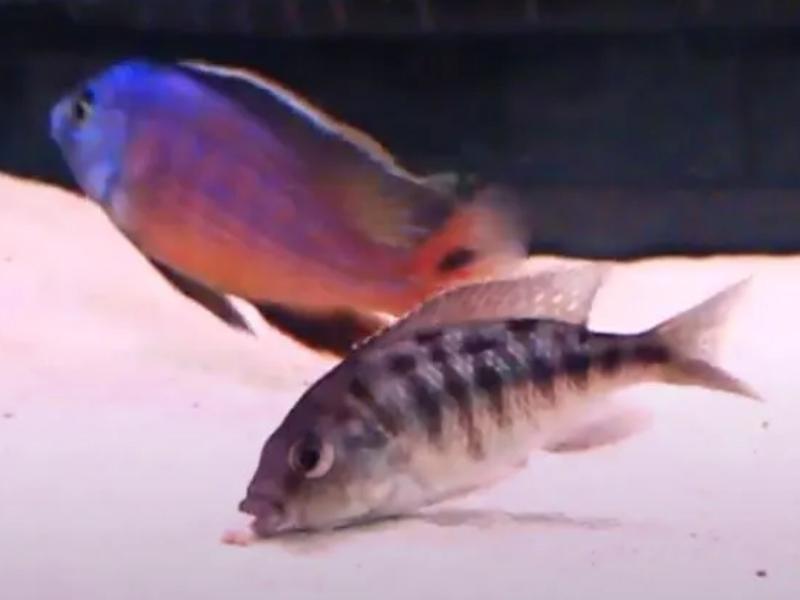
Breeding red empress cichlids is relatively easy and these fish have been successfully bred in captivity.
Like other cichlids, the red empress is a mouthbrooder, with fertilization happening externally.
The male initiates breeding by choosing a small area on the sand or flat rock. He’ll then chase females until one follows him to the chosen area.
The male then rotates himself into a vertical position and shakes, encouraging the female to go vertical as well.
After laying 40 to 50 eggs, the female will pick them up in her mouth. To collect the sperm for fertilization, the female will mouth the male’s anal fin.
This will stimulate the male to release the sperm and fertilize the eggs.
The female red empress will hold the eggs inside her mouth for the entire gestation period, which lasts three to four weeks.
When spawning is over, the male will stop guarding the area and go back to swimming in the open waters.
Both male and female red empress cichlids watch over the fry after they hatch. Unlike the majority of fish that eat their fry, both male and female red empress cichlids show signs of parenthood.
Should You Get a Red Empress Cichlid for Your Aquarium?
The red empress cichlid is a popular freshwater fish that will add color to your aquarium. As a hardy species, red empress cichlids are easy to care for and a good choice for beginner and advanced cichlid keepers.
To keep your red empress fish healthy and happy, set up their tank to mimic the waters of Lake Malawi. Make sure your fish has plenty of space to swim freely, and keep the fish in small groups with only one male.

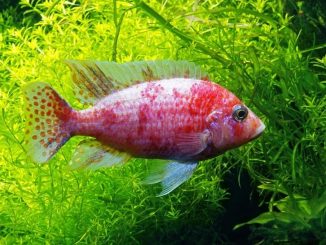
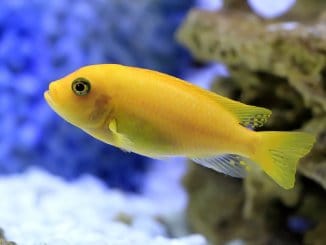
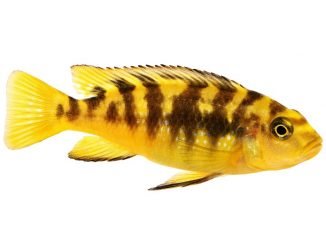
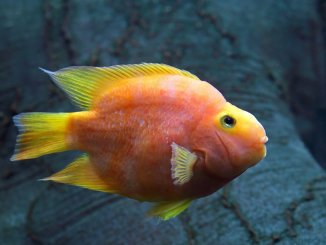
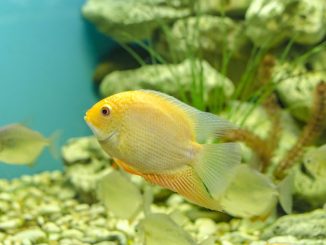
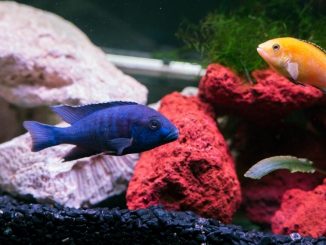
Be the first to comment